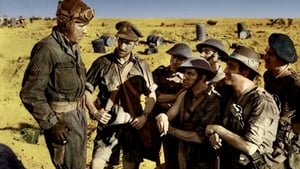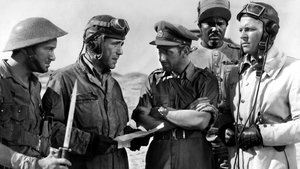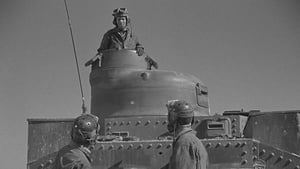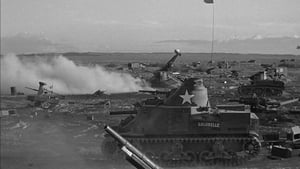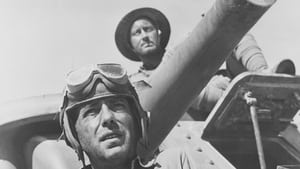Contact: [email protected]
Video Sources 0 Views
- Watch trailer
- Sahara

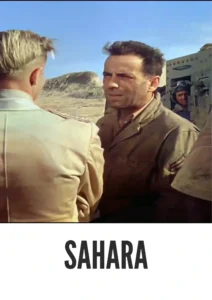
Synopsis
Table of Contents
ToggleReview: Sahara (1943) – A Riveting WWII Epic Set in the Desert

Introduction
Sahara, released in 1943, is a gripping World War II epic directed by Zoltan Korda. Set against the backdrop of the North African desert, this film captures the harrowing experiences of a diverse group of soldiers as they fight for survival against overwhelming odds. In this review, we’ll delve into the desert sands and explore the timeless appeal of Sahara.
Check The Full Colorized Movies List
Check Our Colorized Movies Trailer Channel
Understanding Sahara (1943): Director, Cast, and Genre
Directed by Zoltan Korda, Sahara boasts a talented ensemble cast, including Humphrey Bogart, Bruce Bennett, and J. Carrol Naish. The film belongs to the war genre, known for its depiction of conflict, camaraderie, and heroism in the face of adversity.
Exploring the World of Sahara (1943): Plot and Characters
Sahara follows the journey of a tank crew led by Sergeant Joe Gunn, who find themselves stranded in the Sahara desert after their vehicle is destroyed during a battle. As they struggle to survive in the harsh desert environment, they encounter a diverse group of allies and enemies, including British soldiers, French refugees, and German prisoners of war. Together, they must put aside their differences and work together to defend a vital oasis against a relentless onslaught from enemy forces.
The Art of Film Colorization
While Sahara was originally filmed in black and white, its early colorized version adds a new layer of depth to its breathtaking desert landscapes and vivid battle scenes. The colorization process enhances the film’s visual impact and captures the harsh beauty of the desert with stunning clarity.
Early Colored Films: A Brief History
The history of early colored films is marked by innovation and experimentation as filmmakers sought to enhance the visual appeal of their movies. From hand-tinted frames to pioneering technicolor processes, the evolution of colorization techniques transformed the cinematic landscape, offering audiences a new way to experience the drama and spectacle of war.
Sahara (1943) and Its Early Colored Version
The decision to release Sahara in a colorized format was made with the intention of immersing audiences in the breathtaking beauty of its desert landscapes and enhancing the film’s visual impact. While some purists may prefer the original black and white version, the early colorized edition of Sahara adds a new layer of depth to its epic battle scenes and captures the camaraderie of its diverse cast with breathtaking clarity.
The Debate Over Film Colorization
The debate over film colorization continues to divide audiences and industry professionals alike. While some argue that colorization breathes new life into classic films and makes them more accessible to modern audiences, others maintain that it compromises the artistic integrity of the original work. As technology advances and filmmaking techniques evolve, the debate over colorization remains a topic of ongoing discussion within the film community.
Examining Sahara (1943) as an Early Colored Film
Viewing Sahara in its early colorized iteration offers audiences a fresh perspective on its breathtaking desert landscapes and vivid battle scenes. The colorization process enhances the film’s visual impact and captures the harsh beauty of the desert with stunning clarity. As viewers are drawn into the epic struggle for survival, they are treated to a visual feast that immerses them in the drama and spectacle of war.
Influence and Legacy: Sahara (1943)’s Impact on Cinema
Sahara is widely regarded as a classic of the war genre that continues to captivate audiences with its gripping storyline, spectacular action sequences, and memorable performances. Its portrayal of courage, sacrifice, and camaraderie in the face of overwhelming odds has left an indelible mark on cinema, inspiring countless war films and earning its place in the pantheon of cinematic classics.
Director’s Cinematic Legacy: Beyond Sahara (1943)
Zoltan Korda’s directorial legacy extends far beyond Sahara, encompassing a diverse body of work that includes acclaimed films such as The Four Feathers and Jungle Book. As one of the most respected filmmakers of his generation, Korda was known for his ability to craft visually stunning films that explored the complexities of the human experience with depth and nuance. Sahara stands as a testament to his talent and creativity, solidifying his reputation as one of the great auteurs of classic Hollywood cinema.
Themes Explored in Sahara (1943)
At its core, Sahara explores themes of courage, sacrifice, and camaraderie in the face of overwhelming odds. Through its diverse cast of characters and spectacular action sequences, the film offers a powerful portrayal of the human spirit, challenging viewers to confront their own beliefs about heroism and sacrifice as they witness the epic struggle for survival in the unforgiving desert.
Reception and Controversy Surrounding Sahara (1943)
Upon its release, Sahara received widespread critical acclaim for its gripping storyline, spectacular action sequences, and memorable performances. While the decision to release the film in a colorized format sparked debate among purists, its enduring popularity has cemented its status as a timeless classic of the war genre.
Where to Watch Sahara (1943) Online
For those eager to experience Sahara for themselves, the film is readily available on popular streaming platforms such as Amazon Prime Video, Google Play Movies, and iTunes. Whether viewed in its original black and white format or its early colorized iteration, Sahara offers a cinematic experience that is both epic and visually stunning.
FAQs About Sahara (1943)
1. Is Sahara based on a true story?
No, Sahara is a fictional film that depicts the fictional exploits of a tank crew stranded in the North African desert during World War II. While the film’s storyline may draw inspiration from real-life events, its characters and plot are works of fiction.
2. Who starred in Sahara?
Sahara stars Humphrey Bogart in the role of Sergeant Joe Gunn, the leader of a tank crew stranded in the desert. He is supported by a talented ensemble cast, including Bruce Bennett, J. Carrol Naish, and Lloyd Bridges.
3. What is the central message of Sahara?
At its core, Sahara explores themes of courage, sacrifice, and camaraderie in the face of overwhelming odds. Through its diverse cast of characters and spectacular action sequences, the film offers a powerful portrayal of the human spirit, challenging viewers to confront their own beliefs about heroism and sacrifice as they witness the epic struggle for survival in the unforgiving desert.
4. Why was Sahara released in a colorized format?
The decision to release Sahara in a colorized format was made with the intention of immersing audiences in the breathtaking beauty of its desert landscapes and enhancing the film’s visual impact. While some purists may prefer the original black and white version, the early colorized edition of Sahara adds a new layer of depth to its epic battle scenes and captures the camaraderie of its diverse cast with breathtaking clarity.
5. What is the legacy of Sahara?
Sahara is widely regarded as a classic of the war genre that continues to captivate audiences with its gripping storyline, spectacular action sequences, and memorable performances. Its portrayal of courage, sacrifice, and camaraderie in the face of overwhelming odds has left an indelible mark on cinema, inspiring countless war films and earning its place in the pantheon of cinematic classics.
6. Are there any sequels or remakes of Sahara?
No, there have been no official sequels or remakes of Sahara. However, the film’s enduring popularity has inspired countless reinterpretations and homages in various media. Nonetheless, none have captured the epic scale and emotional resonance of the original 1943 classic.
7. Where can I watch Sahara online?
For those eager to experience Sahara for themselves, the film is readily available on popular streaming platforms such as Amazon Prime Video, Google Play Movies, and iTunes. Whether viewed in its original black and white format or its early colorized iteration, Sahara offers a cinematic experience that is both epic and visually stunning.
Conclusion
In conclusion, Sahara (1943) stands as a gripping World War II epic that continues to captivate audiences with its breathtaking desert landscapes, spectacular action sequences, and memorable performances. Whether viewed in its original black and white format or its early colorized iteration, Zoltan Korda’s insightful direction and the stellar performances of the cast offer a cinematic experience that is both epic and emotionally resonant. As viewers are drawn into the epic struggle for survival in the unforgiving desert, they are treated to a visceral journey that celebrates the courage, sacrifice, and camaraderie of the human spirit. Sahara remains a timeless classic that continues to inspire and enthrall audiences around the world.
